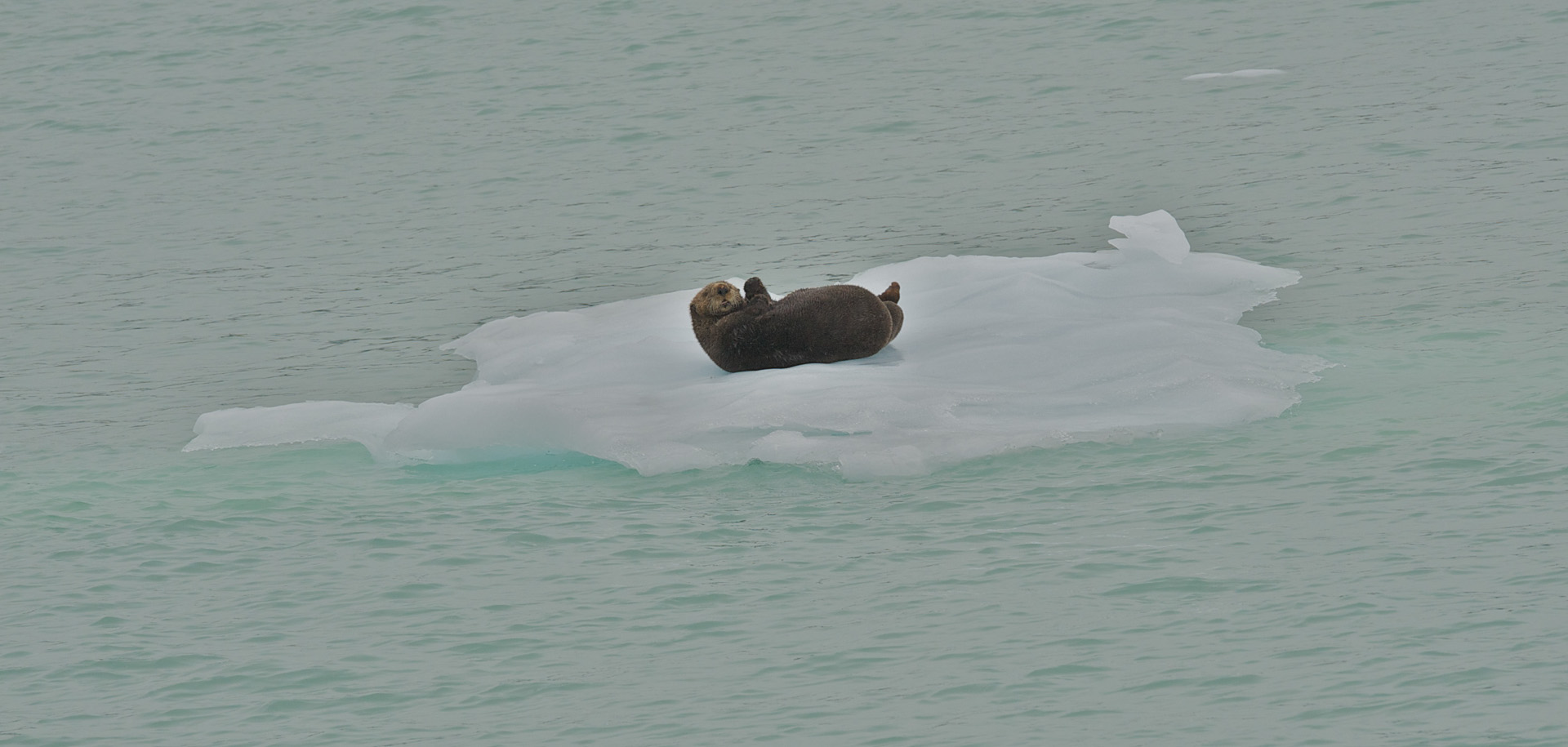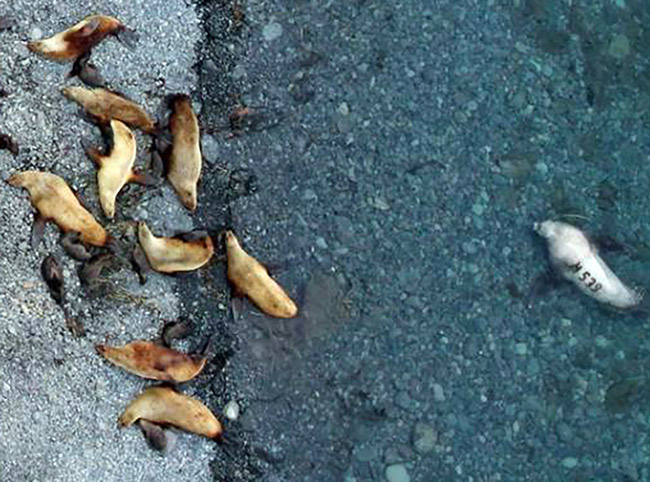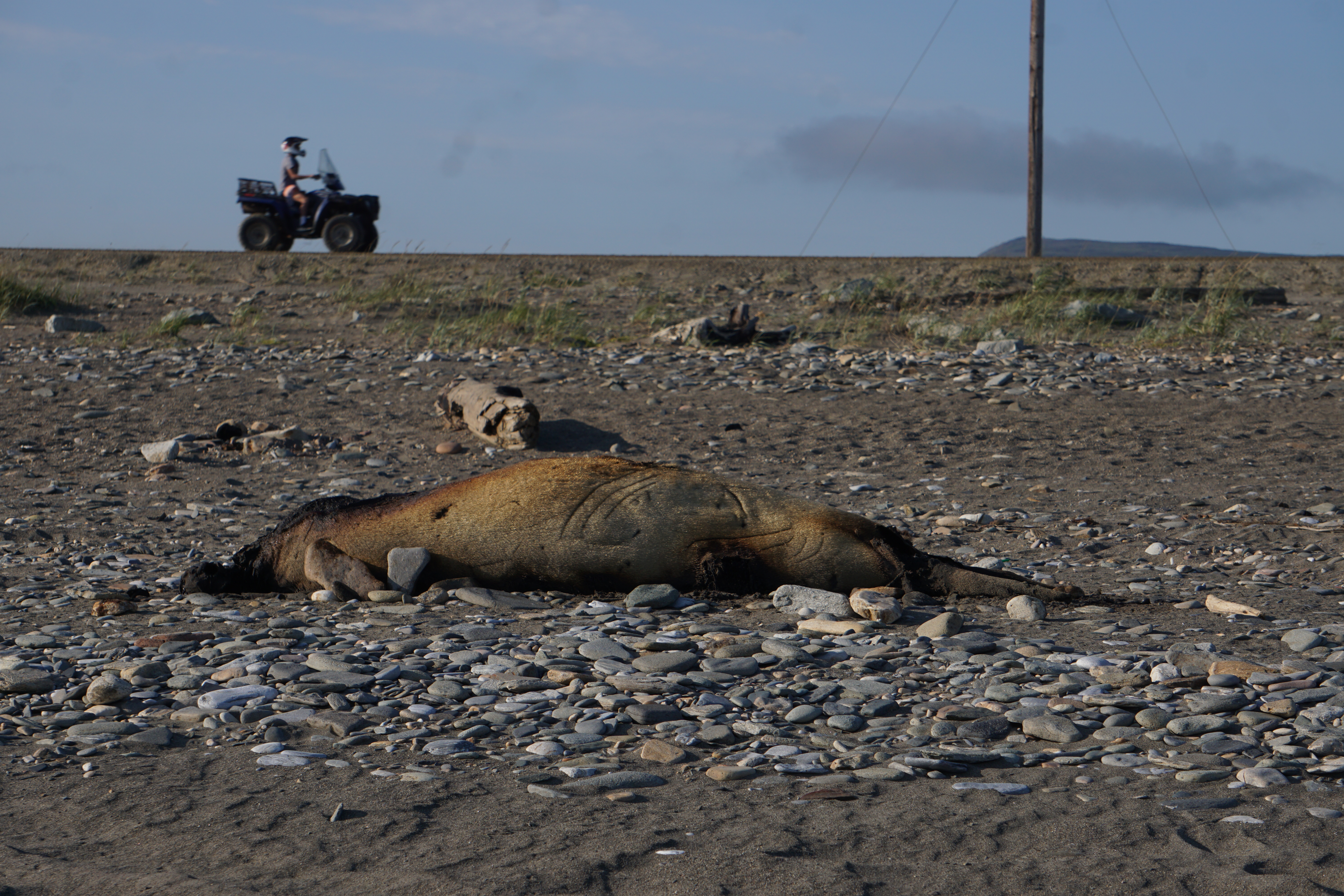A seal-killing virus probably spread from the North Atlantic to North Pacific because of sea ice retreat
A new study links surges of phocine distemper virus, or PDV, in Alaska marine mammals to years with low sea ice.

When scientists in 2004 found that Alaska sea otters were exposed to a sometimes-deadly virus that plagues seals in the North Atlantic, they were puzzled. Sea otters do not travel far, and the phocine distemper virus, a major problem for the other side of the world, had not been previously found in Alaska waters.
“That was really surprising to us because we could not figure out how the virus from the north Atlantic would (turn) up in otters in Kodiak,” said Tracey Goldstein of the University of California Davis, one of the scientists working on the project.
Now, a new study suggests that the virus — phocine distemper virus, or PDV — made its way from the North Atlantic to the North Pacific through the Arctic, likely enabled by the retreat of Arctic sea ice.
The study, published in the journal Nature Communications, is based on samples taken from Alaska seals, sea lions and sea otters between 2001 and 2016. It found that PDV had become fairly entrenched in Alaska waters, and with signs of exposure spiking in periods of especially low Arctic sea ice — and rising in recent years.
The animals tested were from a variety of species and spanned across Alaska’s waters, from the Beaufort Sea in the Arctic to the Gulf of Alaska waters off the temperate rainforest of southeast Alaska. In all, samples were taken from 2,350 live marine mammals and 165 dead animals, largely those harvested in subsistence hunts.

Presence of PDV antibodies (an indicator of exposure) or the virus itself in Alaska animals itself rose in years that followed periods of much-reduced sea-ice extent — 2002-2003, in 2006 and in 2009, according to the results. Those spikes also followed phocine distemper outbreaks in the North Atlantic.
It is most probable that the virus spread over waters north of Russia, the study concludes. The spikes in PDV in Alaska animals followed years when sea ice retreat was especially marked in the Northern Sea Route.
The study of PDV in Alaska marine mammals has been part of the One Health Initiative, a cooperative program that examines the health connections between animals, humans and the changing environment. Goldstein, one of the study’s authors, is associate director of the One Health Institute at UC Davis’ School of Veterinary Medicine, and she oversees a marine ecosystem laboratory used for One Health-related projects.
Also participating in the study were scientists from the National Oceanic and Atmospheric Administration, U.S. Fish and Wildlife Service, Alaska Department of Fish and Game, University of Alaska, Alaska SeaLife Center and the tribal government of St. George Island in the Bering Sea, among other institutions. It was supported by the Colorado-based Morris Animal Foundation.
Phocine distemper, related to canine distemper, was first recognized in 1988 after a massive seal die-off in European waters. There have been subsequent waves of die-offs in the Atlantic, including last year in waters of New England.

The initial discovery in Kodiak-area sea otters was made while scientists were trying to understand the drastic decline of sea otters farther west, in the western Aleutian Islands, Goldstein said. Currently, the western Alaska sea otter population is classified as threatened.
So far, there no Alaska marine mammals are known to have been killed or seriously sickened from PDV infections, Goldstein said. However, the possibility is being considered.
A big die-off of Alaska ice seals that started last year has been declared an unusual mortality event, triggering special investigations by scientists. There was a previous unusual mortality event affecting seals and walruses in 2011 and 2012.
In the current event, evidence from the dead and dying seals suggests starvation. But a disease like phocine distemper might be in the mix, Goldstein said.
“These guys, it seems like they’re really underweight. But we don’t know if there’s an infectious complication,” she said.
A broader issue, she said, is that lack of ice is creating stressful conditions that weaken animals’ defenses against disease.
“They’re having to travel farther to have their babies. They’re having to travel farther to find their food,” she said. “The animal health side of it and their ability to respond to infection is going to be the bigger concern over it.”
Since 2002 and 2005, years when Arctic ice retreat was considered extreme at the time, the ice has diminished considerably, and not just at the end of the melt season. The open-water season is longer, the winter ice is sparser and, even when freeze-up occurs, the ice is thinner and younger.
That is setting up conditions that could allow the spread of several diseases like phocine distemper, Goldstein said.
“Now that the ice is open all the time, it means that things can be moving back and forth,” she said.
The newly published study issues that warning.
“Climate change-driven reductions in sea ice extent in the Arctic Ocean are projected to increase and open water routes along the northern Russian coast have occurred every August and/or September since 2008. The health impacts of this new normal in the Arctic are unknown, but association of open water routes through Arctic sea ice with increased PDV exposure or infection suggest that opportunities for PDV and other pathogens to cross between North Atlantic and North Pacific marine mammal populations may become more common,” it said.
Studies of PDV exposure are continuing. Scientists are starting to evaluate samples taken from marine mammals last year and this year, Goldstein said.